BUSN 350 - Impact of Liberalisation on India: A Detailed Review
VerifiedAdded on 2023/04/21
|5
|492
|260
Report
AI Summary
This report examines the impact of political and economic liberalisation on India, particularly since 1991. It discusses how liberalisation, driven by factors like privatisation and technology, has influenced India's economic growth. The report highlights the shift towards a more privatised and service-oriented economy, driven by government policies promoting entrepreneurship. It addresses the economic crisis that led to liberalisation, including reduced tariffs, foreign direct investment, and the privatisation of state-owned enterprises. The analysis concludes that liberalisation has significantly contributed to India's GDP growth, technological advancements in agriculture, and overall industrial development, positioning India to meet the demands of the neoliberalisation era. Desklib provides access to this and other solved assignments for students.
1 out of 5
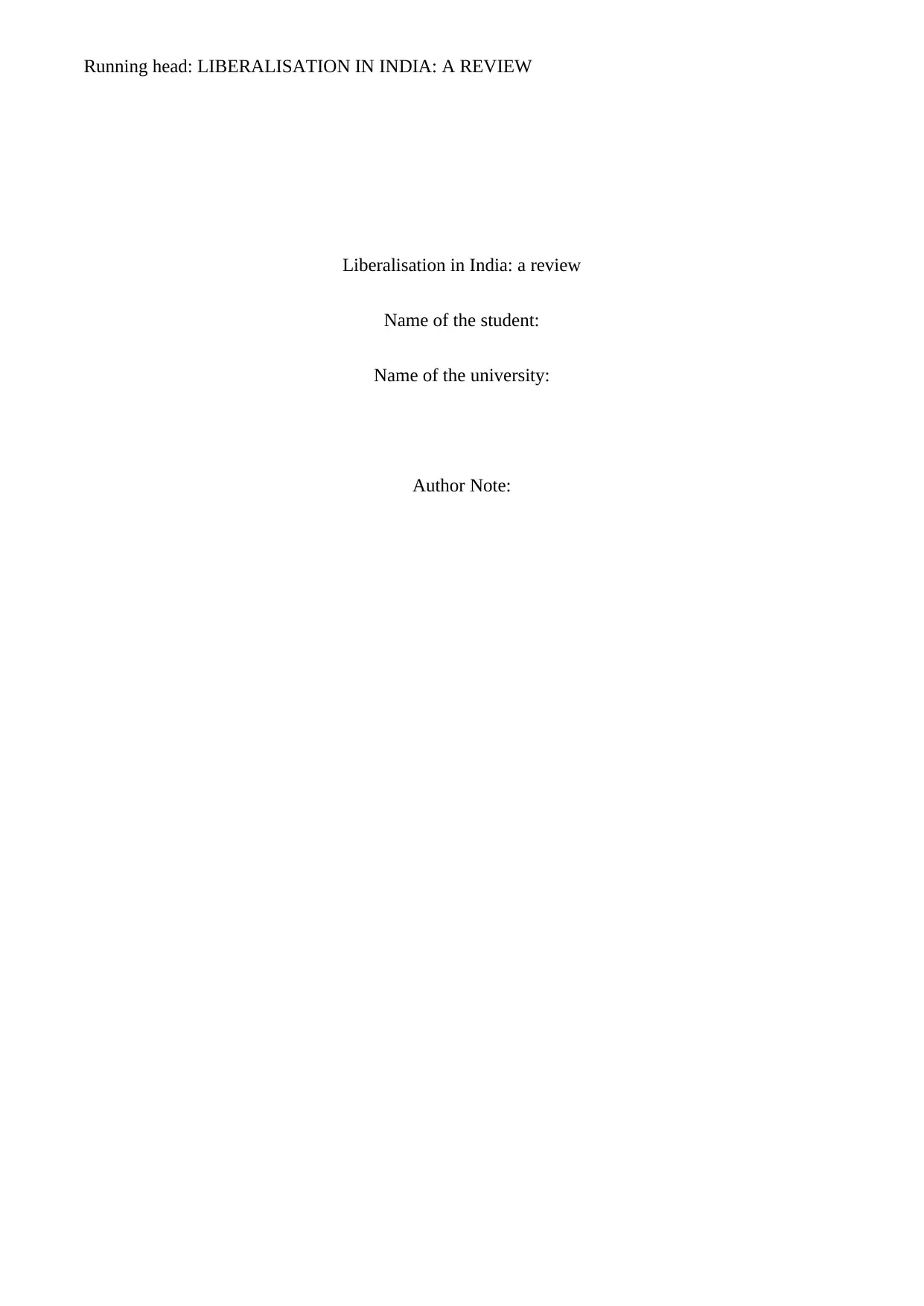
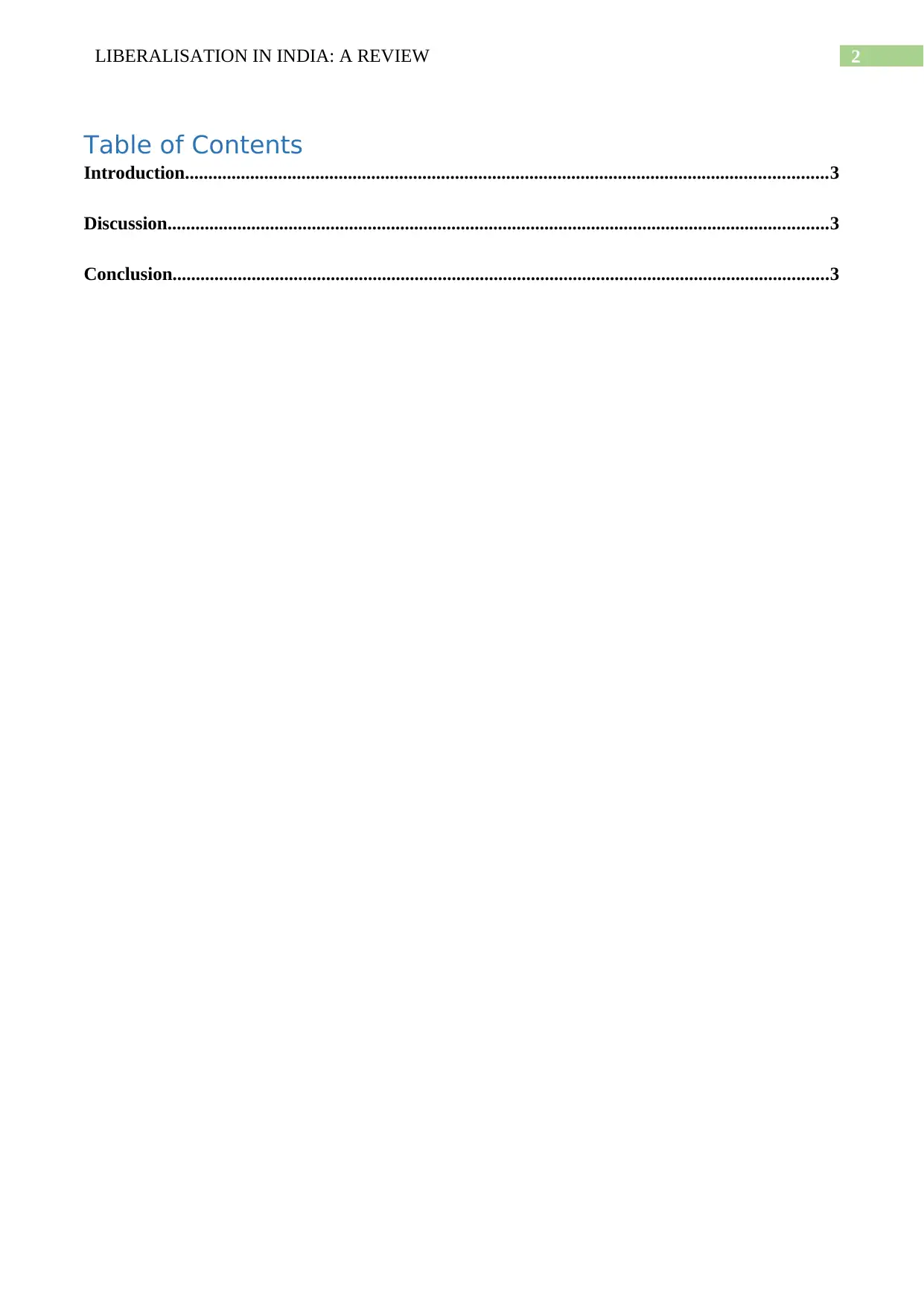
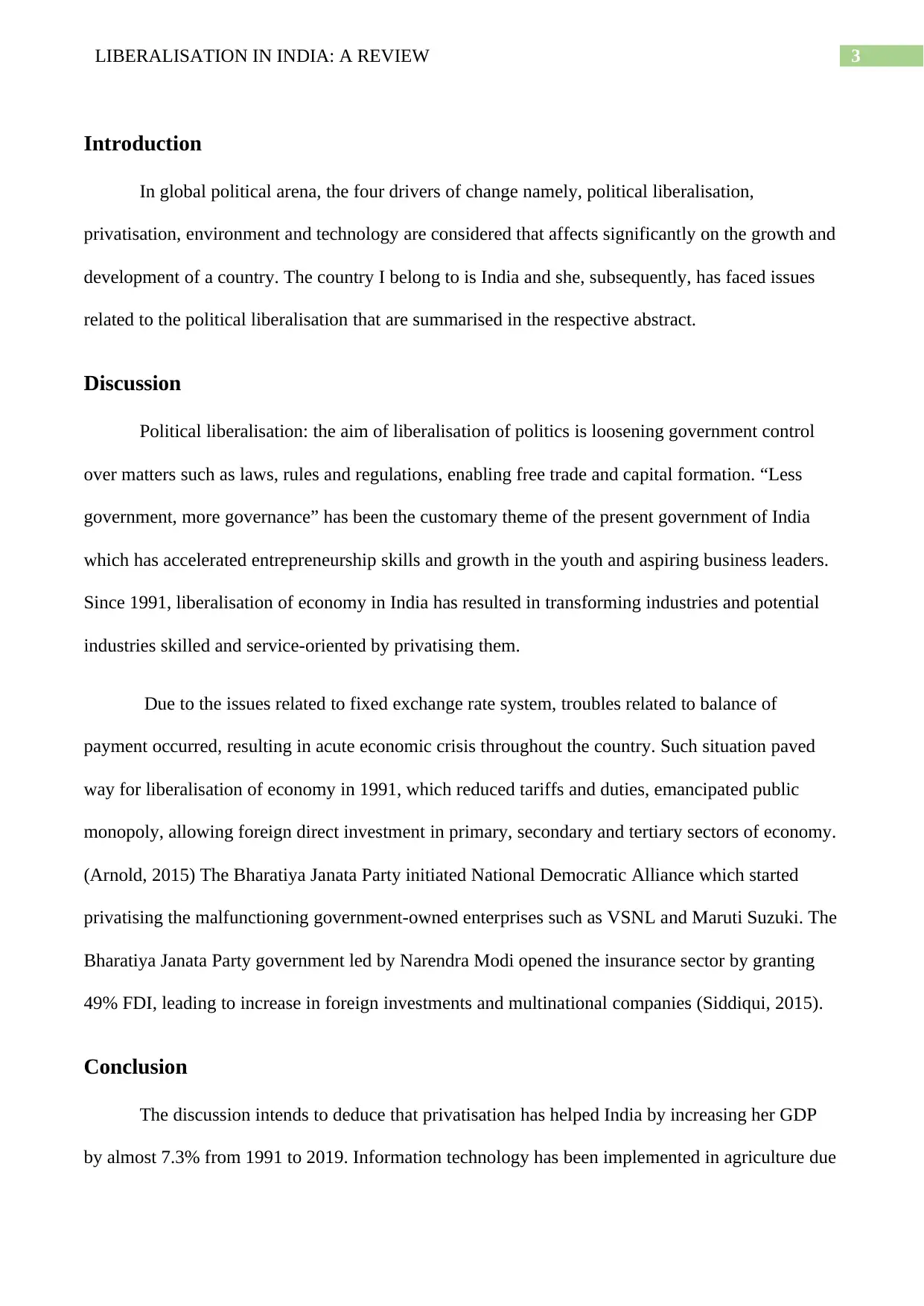

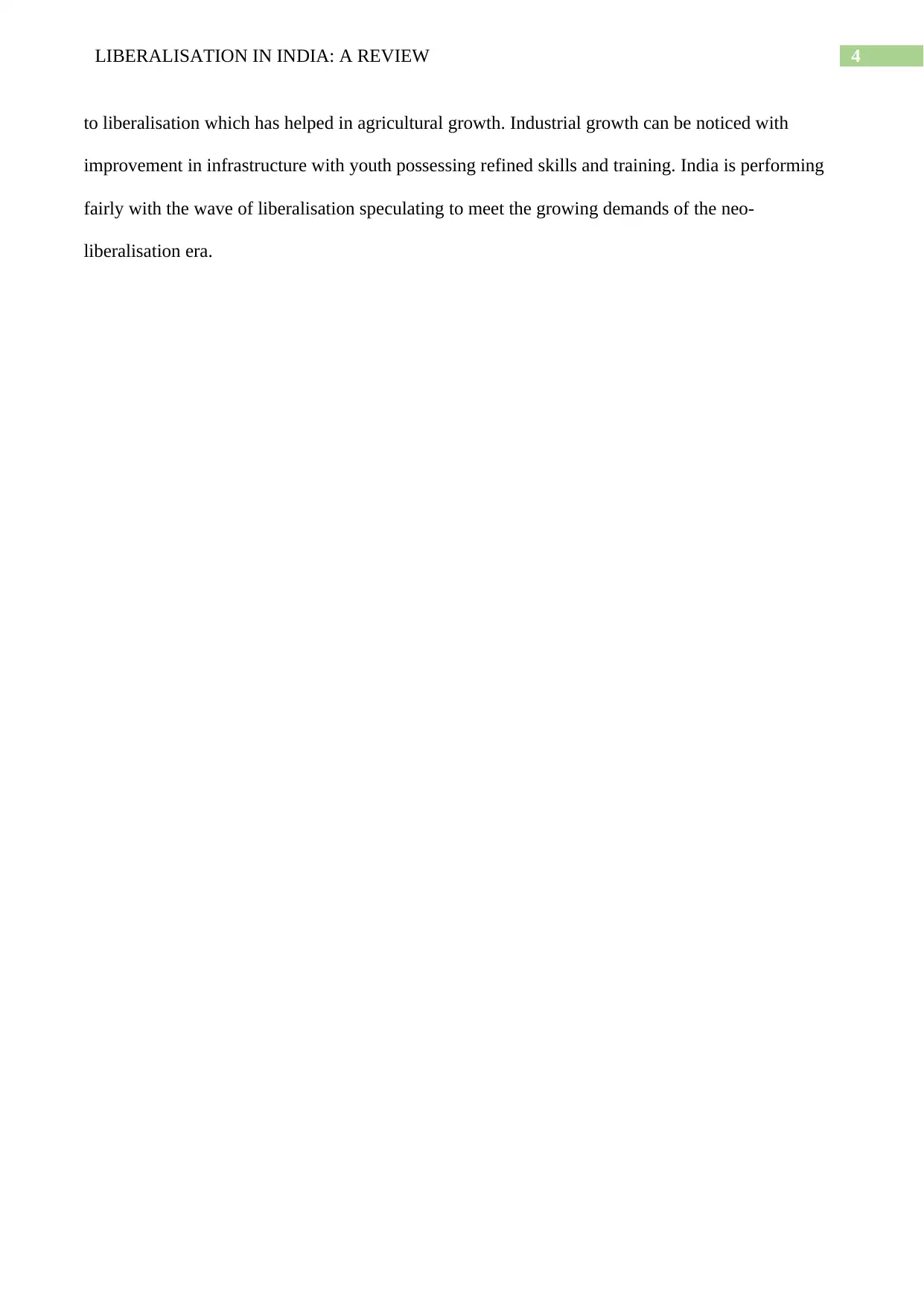
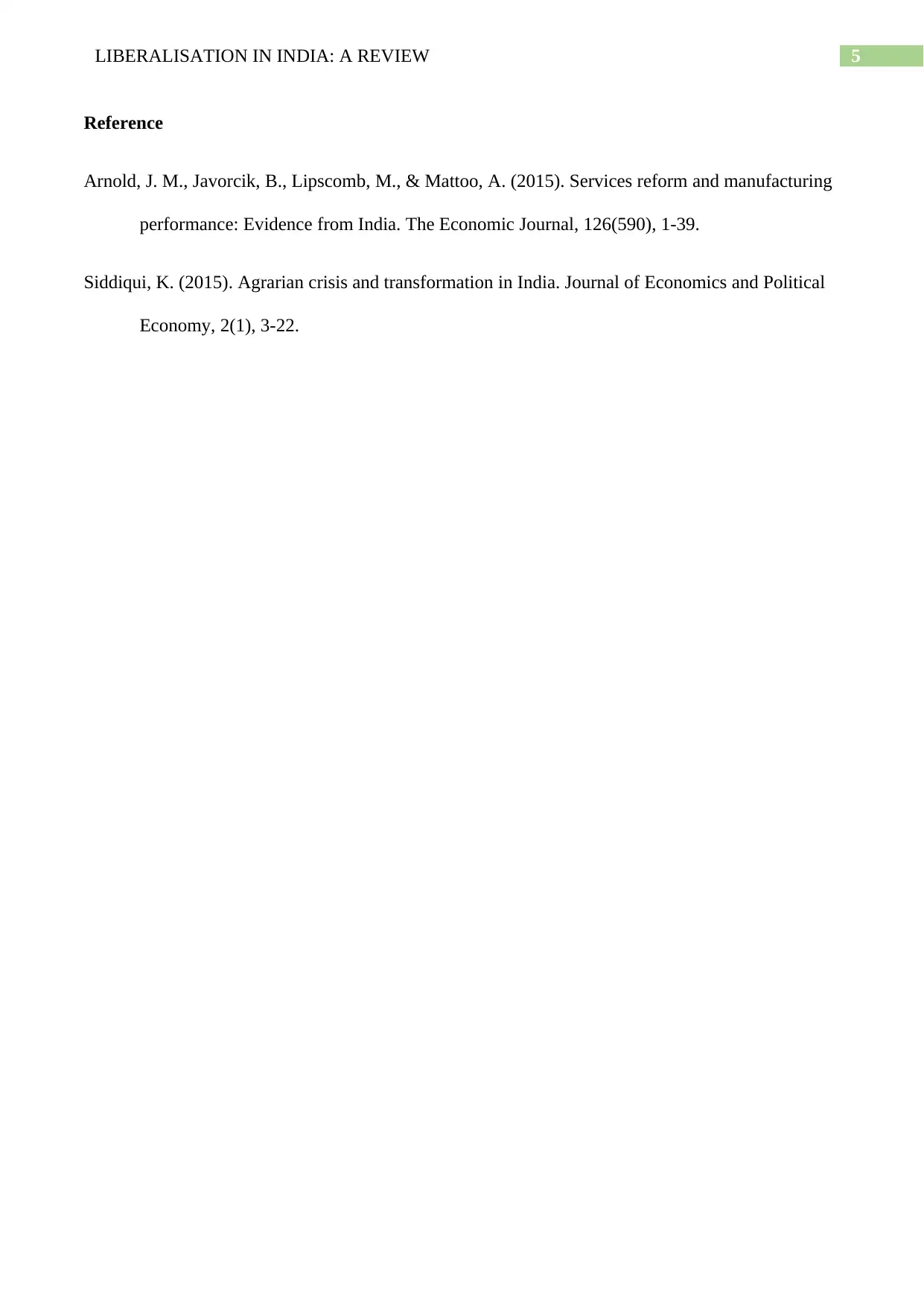






![[object Object]](/_next/static/media/star-bottom.7253800d.svg)